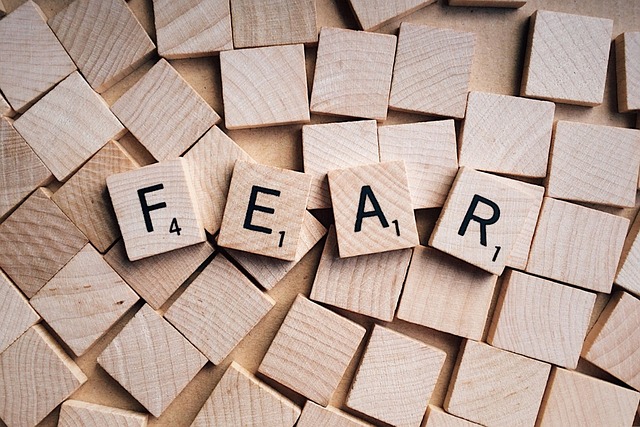That little voice inside us, our ego, it’s like our loyal sidekick on the one hand, but a pesky troublemaker on the other.
Your ego is like a bouncer at a club.
It’s there to protect you, make sure you’re safe, and keep out the riff-raff.
But sometimes, it gets a bit carried away, doesn’t it? It starts throwing its weight around, causing trouble, and ruining the vibe. And before you know it, you’re left wondering, “Who invited this guy?”
Mastering yourself is like being the conductor of an orchestra. You’ve got all these different parts of yourself playing their tunes, and you’re there, in the middle, keeping everything in harmony. And to do that, you’ve got to learn to silence the ego when it starts playing too loudly
Silencing the ego is a bit like decluttering your closet; you sift through all those clothes, memories, and long outdated beliefs, and decide what stays and what goes.
You make space for the things that truly serve you, that help you grow, that make you feel alive.
Sometimes, you’ve got to wrestle with that ego, pin it down, and say, “Not today, b*tch.” But trust me, the more you practice, the easier it gets.
WHAT IS EGO?

“Everything we hear is an opinion, not a fact. Everything we see is a perspective, not the truth.”
-Marcus Aurelius
Have you ever stopped to ponder the intricacies of the ego? It’s like a puzzle we’ve constructed, made up of pieces we’ve gathered over a lifetime. But what exactly is this elusive ego we speak of?
Imagine it as a vision board of our self-perception. You know, those labels we stick on ourselves like post-it notes – “I’m confident,” “I’m shy,” “I’m ambitious.” These are the ego statements, the building blocks of our perceived identity.
The ego itself isn’t inherently good or bad. It’s the thoughts and beliefs that hitch a ride on its back that can lead us down the rabbit hole.
We get so tangled up in the stories we tell ourselves, the “I”s and “Me”’s that dictate who we think we are.
Imagine it this way, you’re nine years old, and someone tells you that you’re not cut out to be a ballerina because you’re too short. Or maybe they say you’re not a math whiz, and certainly are not destined for academic greatness. These words, stick with us like gum on a shoe, shaping our sense of self.
But sometimes, those stories turn out to be nothing more than smoke and mirrors.
Maybe you realize you’re not as tall as the other dancers, but you’ve got moves that could rival the pros. Or perhaps you stumble over algebra but find your groove in literature.
That’s the thing about the ego – it’s a slippery fish, always changing, always evolving. It’s not just one solid concept — it’s a mishmash of beliefs we’ve picked up along the way, some true, some not so much.
When we peel back the layers of the ego, we uncover a truth that’s been there all along: our identity is as fluid as the tides, shaped not by the labels we slap on ourselves, but by the stories we choose to believe.
WHAT IS THE RELATIONSHIP BETWEEN EGO AND FEAR?

Ever felt that surge of adrenaline when faced with a daunting challenge? That’s fear kicking in, my friend. It’s like your body’s built-in alarm system, designed to keep you safe from harm.
Fear isn’t always your friend. More often than not, it’s the ego’s favorite playmate.
Your ego thrives on control, on certainty. What better way to assert control than by using fear as its trusty sidekick? It’s like a tag team wrestling match, with fear taking the lead and the ego cheering from the sidelines.
But while fear may seem like the ultimate motivator, it’s a double-edged sword. Sure, it can spur us into action, but it can also hold us back, trapping us in a cycle of anxiety and doubt.
You see, the ego hates uncertainty. It wants everything neatly packaged and labeled, with no room for surprises. So, when faced with the unknown, it goes into overdrive, frantically trying to regain control.
But here’s the kicker: the more we let fear call the shots, the more we feed into the ego’s game. It’s like a vicious cycle, with fear fueling the ego, and the ego fueling our fears.
So how do we break free from this toxic dance?
It starts with awareness.
By recognizing when fear is driving our actions, we can begin to reclaim control of our narrative. It’s like shining a light into the darkness, exposing the ego’s tricks for what they are.
And that’s where the ego audit comes in. It’s like taking inventory of your mental attic, sorting through the clutter of fears and insecurities to uncover the truth beneath. It’s not always easy, but it’s a necessary step on the path to self-discovery.
So the next time fear comes knocking at your door, ask yourself: am I letting the ego call the shots, or am I taking control of my destiny? It’s a choice we make every day, a choice between staying stuck in the same old patterns or breaking free and stepping into our power.
FAMILIAR FEAR TYPES

Let’s dive into the intriguing realm of familiar fear types. Imagine you’re walking down the street, and suddenly you feel that familiar knot in your stomach, that nagging voice in the back of your head. It’s like a twisted form of déjà vu.
Now, familiar fear syndrome, as I like to call it, is all about those conditioned responses we’ve picked up along the way. It’s like when a child touches a hot stove and learns their lesson the hard way – trust me, they won’t be making that mistake again anytime soon. It’s a survival instinct, a built-in defense mechanism to protect us from harm.
Not all familiar fears are created equal. Some are like old friends, guiding us away from danger and protecting us from harm. We call these useful familiar fears, the ones that help us stay on our toes and avoid repeating past mistakes.
It’s like saying, “Okay, I’ve been down this road before, so I know to steer clear this time.”
But then there are the other kinds of familiar fears, the ones that hold us back and keep us stuck in our comfort zones. These are the useless familiar fears, the ones that make us shy away from new experiences and opportunities for growth.
These fears are like saying, “I’ve been burned before, so I’m not even going to bother trying.”
Navigating the dark waters of familiar fear isn’t always easy. It’s like trying to untangle a knot, with fear pulling one way and our instincts pulling another.
That’s where the ego audit comes in.
By asking tough questions and digging deep into our subconscious, we can uncover the root causes of our familiar fears and learn to distinguish between the ones that serve us and the ones that hold us back. It’s like shining a spotlight on the shadows, exposing our fears for what they truly are and reclaiming control of our destiny.
So, the next time you feel that familiar pang of fear creeping in, ask yourself: is this fear guiding me towards growth, or is it holding me back from reaching my full potential? It’s a choice we make every day, between staying stuck in the past or stepping boldly into the unknown.
THE EGO AUDIT
Let’s delve into the powerful tool known as the Ego audit. Imagine it as a roadmap to navigate our deepest fears and insecurities. It’s like shining a spotlight into the darkest corners of our minds, illuminating the hidden patterns that drive our thoughts and behaviors.
The Ego audit is no ordinary questionnaire. It’s a carefully crafted series of eighteen questions designed to peel back the layers of our subconscious and uncover the roots of our fear-based responses.
Each question prompts us to explore our feelings, dissect the messages they’re trying to communicate, and question whether our ego is leading us down a path of unsupported conclusions.
The ego audit isn’t just about identifying our fears; it’s about transforming them into opportunities for growth and development.
We’re not always as self-aware as we think we are. Our egos can cloud our judgment, skewing our perceptions of ourselves and the world around us. But by confronting our fears head-on, by taking inventory of our truths and beliefs, we can begin to separate ourselves from the judgments of our ego and align with our true purpose.
THE TAKEAWAY
By understanding how familiar fear types operate and utilizing tools like the ego audit, we’ve uncovered pathways to self-awareness and personal growth
Here are some practical steps to incorporate into your social media journey:
- Reflect Daily: Dedicate a few moments each day to journaling or using mindfulness apps to reflect on your thoughts and emotions.
- Share Your Story: Embrace vulnerability by sharing your experiences with your social media community. Your authenticity can inspire others on their journeys of self-discovery.
- Follow Inspirational Content: Surround yourself with accounts and groups that promote positivity, self-awareness, and personal growth.
- Practice Empathy: Extend compassion to yourself and others as you navigate the complexities of ego and fear. Building a supportive community online can provide encouragement and understanding.
- Set Intentions: Define clear intentions for how you want to show up in the world. Create actionable goals that align with your values and aspirations.
The next time you find yourself wrestling with doubt or insecurity, remember the power of the Ego audit. It’s not just a tool for self-discovery; it’s a roadmap to liberation, guiding us towards a deeper understanding of ourselves and our place in the world.



Leave a Reply